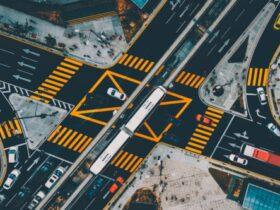By Sharina Ahmad
AS more Malaysians live in urban areas, cities are starting to face pain points such as congestion, pollution and inefficient deployment of urban services.
Building smart cities is seen as a solution that addresses these issues and improves the quality of life of urban dwellers.
In September last year, then Prime Minister Tun Dr Mahathir Mohamad launched Malaysia Smart City Framework. He said it is important to turn Malaysia into a “smart city” and it is among the items of priority under the 12th Malaysia Plan (12th MP).
Arkitek Mustapha Kamal Sdn Bhd principal Mustapha Kamal Zulkarnain says it is a great effort and a good paper (framework) prepared.
“I would certainly hope that the full acronym of SMART (which stands for System, Monitor, Analysis, Reconfigure and Thinking (re-think)) is being implemented and used in our cities to be more meaningful. It should not be just lip service,” he tells FocusM.
Smart city initiatives are also part of the actions of the National Physical Plan 3 which is aimed at expanding and enhancing digital infrastructure, strengthening and expanding broadband coverage, and strengthening the provision of infrastructure facilities and services for smart city initiatives.
Internet of Things (IoT) firm Senzo Malaysia Sdn Bhd chief technology officer Dr Muhammad Imran Sarwar tells FocusM that Kuala Lumpur, Johor and Penang are on the path of becoming smart cities, but they still have a long way to go.
“The smart city initiative should have focused on sustainable energy management, security, autonomous vehicles and public safety.
“From a technological perspective, the launch of 5G will enable smart cities along with IoT, big data analytics and cybersecurity,” he said.
However, slow economic growth in the region, cost of infrastructure and old mindsets are the hurdles of making a smart city, says Muhammad Imran.
“The government should be a bridge between the industry and academia and make smart cities an important agenda for a sustainable tomorrow.”
Smart cities need strategic planning
In planning for smart cities, Mustapha says governments and developers need to understand the preliminary objective of how to implement smart cities and how they can solve the problems in the cities.
“Yes, it would help to boost the government agenda. It should transcend to Kuala Lumpur, Putrajaya and Cyberjaya as they are part of the Multimedia Super Corridor in the late 1990s and early 2000s.
“We have all the ingredients like manpower, knowledgeable technologists, a learning scientific community, and governance from the government,” Mustapha says.
According to him, what is lacking is the belief, trust and commitment by the financial communities to realise the importance of this in order to be at the forefront of economics and technology in the very near future.
“The belief, trust and importance placed by the financial community are to support all these initiatives to fruition. Another is the short-term thinking of this being a long gestation period to return your investments.
“With such participation, we can collectively imagine, examine, choose and shape the future of our cities,” he says.
Mustapha further adds that a smart city is a convergence of big data, connectivity and artificial intelligence (AI) towards a “precision city”.
Meanwhile, Muhammad Imran says the government’s role is to create the policy and framework for a smart city. Moreover, it should encourage different relevant ministries to work together.
“Government should also give tax incentives and research and development funds to the industry and academia so they can develop all the components of a smart city locally.”
Why we need smart cities
Mustapha shares the primary goal of a smart city is to create an urban environment that yields a high quality of life to its residents while also generating overall economic growth.
“Therefore, a major advantage of smart cities is their ability to facilitate an increased delivery of services to citizens with less infrastructure and cost.
“As the population within cities continues to grow, it becomes necessary for these urban areas to accommodate the increasing population by making more efficient use of their infrastructure and assets,” he says.
Smart city applications can enable these improvements, advance city operations and improve the quality of life among residents as well as find and create new value from their existing infrastructure.
Smart city technology
Smart cities use a combination of IoT devices, software solutions, user interfaces (UI) and communication networks.
However, they rely first and foremost on the IoT. The IoT is a network of connected devices – such as vehicles, sensors or home appliances – that can communicate and exchange data.
Data collected and delivered by the IoT sensors and devices are stored in the cloud or on servers.
The connection of these devices and use of data analytics facilitate the convergence of the physical and digital city elements, thus improving both public and private sectors’ efficiency, enabling economic benefits and improving citizens’ lives.
The IoT devices sometimes have processing capabilities called edge computing. Edge computing ensures that only the most important and relevant information is communicated over the communication network.
Features of a smart city
Mustapha notes that emerging trends such as automation, machine learning and the IoT are driving smart city adoption.
Theoretically, any area of city management can be incorporated into a smart city initiative, he says. A classic example is the smart parking meter that uses an application to help drivers find available parking spaces without prolonged circling of crowded city blocks.
The smart meter also enables digital payment, so there’s no risk of coming up short of coins for the meter.
Also in the transportation arena, smart traffic management is used to monitor and analyse traffic flows in order to optimise streetlights and prevent roadways from becoming too congested based on the time of day.
Smart public transit is another facet of smart cities, used to ensure public transportation meets user demand. Smart transit companies are able to coordinate services and fulfil riders’ needs in real time, improving efficiency and rider satisfaction.
It is not a big hoo-ha that nowadays people prefer to live and work in a smart area which has a seamless connection dubbed the transit-oriented development (TOD). It is a mixed-use residential and commercial area designed to maximise access to public transport, and often incorporates features to encourage transit ridership.
Energy conservation and efficiency are major focuses of smart cities. Using smart sensors, smart streetlights dim when there aren’t cars or pedestrians on the roadways. Smart grid technology can be used to improve operations, maintenance and planning, and to supply power on demand and monitor energy outages.
Smart city initiatives also aim to monitor and address environmental concerns such as climate change and air pollution.
Waste management and sanitation can also be improved with smart technology, be it using internet-connected trash cans and IoT-enabled fleet management systems for waste collection and removal, or using sensors to measure water parameters and guarantee the quality of drinking water at the front end of the system, with proper wastewater removal and drainage at the back end.
Smart city technology is increasingly being used to improve public safety, from monitoring areas of high crime to improve emergency preparedness with sensors. For example, smart sensors can be critical components of an early warning system before droughts, floods, landslides or hurricanes.
How smart city works
Mustapha says smart cities utilise their web of connected IoT devices and other technologies to achieve their goals of improving the quality of life and achieving economic growth. Successful smart cities follow four steps:
1. Collection – Smart sensors throughout the city gather data in real time.
2. Analysis – Data collected by the smart sensors are assessed in order to draw meaningful insights.
3. Communication – The insights that have been found in the analysis phase are communicated with decision makers through strong communication networks.
4. Action – Cities use the insights pulled from the data to create solutions, optimise operations and asset management and improve the quality of life for residents.
Fostering sustainability
Sustainability is another major facet of smart cities. Urbanisation is expected to increase even more in the coming years.
The United Nations reported that around 55% of the world’s population currently resides in an urban area or city; this figure is set to rise 68% throughout the coming decades.
Smart technology will help cities sustain growth and improve efficiency for citizen welfare and government efficiency in urban areas in the years to come.
Making the switch to an electric public transportation system would not only decrease fuel emissions, but could also pose the advantage of working closely with the city’s electric power infrastructure in order to minimise the impact of charging batteries during peak hours of electric use.
Furthermore, with proper coordination, electric vehicles could also be used to regulate the frequency of the city’s electric grid when they’re not in service.
The number of cars used in cities is also expected to decrease as municipalities become smarter. Autonomous vehicles, or self-driving cars, could potentially change a population’s perspective on the necessity of owning cars.
Smart city challenges and concerns
According to Muhammad Imran, the current situation, the global meltdown of the economy especially due to coronavirus and the fragile nature of oil prices are some of the key challenges faced.
“Innovative and design thinking should be promoted to create technology and its ecosystem in Malaysia as the supply chain is already there. Moreover, the emphasis of internet protocol towards the smart city eco-system should be created. We should need to think big but start small,” he says.
Nevertheless, Mustapha says smart city initiatives must include the people they aim to help – residents, business, people and visitors.
“The government must not only raise awareness of the benefits of the smart city technologies being implemented, but also promote the use of open, democratised data to its citizens.
“If people know what they are participating in and the benefits it can bring, they are more likely to engage,” he says.
Therefore, fostering collaboration between the public and private sectors and city residents is key to creating smart citizens who will be engaged and empowered and positively contribute to the city and community.
According to Mustapha, new and innovative collaboration methods can improve engagement.
Smart city projects should include plans to make the data transparent and available to citizens, often through an open data portal or mobile app. This enables residents to engage with the data and understand what it is used for.
He said residents may use a smart city app to be able to complete personal chores, such as viewing their home’s energy consumption, paying bills and finding efficient public transportation.
The presence of sensors and cameras may be perceived as an invasion of privacy or government surveillance. To address this, smart city data collected should be anonymised and not be personally identifiable information.
The thousands or millions of IoT devices scattered across the city would be defunct without a solid connection, and the smart city itself would be dead.
Furthermore, Mustapha says public transit, traffic management, public safety, water and waste management, electricity and natural gas supply can be unreliable, especially as a system ages and grows.
However, the importance of these operations will only increase as the city expands and the demands on its infrastructure increase. These systems must be constantly maintained and tested to ensure their proper functioning.
What is a smart city?
In the last several years, there has been an explosive growth of information and communications technologies (ICTs) due to the advancement of hardware and software designs.
Arkitek Mustapha Kamal Sdn Bhd principal Mustapha Kamal Zulkarnain says explains that the use of ICT in cities in various forms for different activities has led to the increased effectiveness of city operations, and these cities have been labelled using many terms such as “cyberville,” “digital city,” “electronic city,” “flexicity,” “information city,” “telicity,” “wired city” and “smart city.”
“Smart city” is the largest abstraction among the labels used, as it encompasses other labels used for cities.
Characteristics
According to Mustapha, there are nine major characteristics used to determine a city’s smartness. They include a technology-based infrastructure, environmental initiatives, a high-functioning public transportation system, a confident sense of urban planning, and humans to live and work within the city and utilise its resources.
A smart city’s success depends on its ability to form a strong relationship between the government – including its bureaucracy and regulations – and the private sector.
This relationship is necessary because most of the work that is done to create and maintain a digital, data-driven environment occurs outside of the government. Surveillance equipment for busy streets could include sensors from one company, cameras from another and a server from yet another.
According to a news report dated Jan 20, Local Government Minister Zuraida Kamaruddin was quoted saying that Pengerang in Johor has been targeted to become a smart city in five years.
Link: https://focusmalaysia.my/property/smart-city-leveraging-on-master-plan-towards-shared-prosperity/
Source: https://focusmalaysia.my
















Leave a Reply